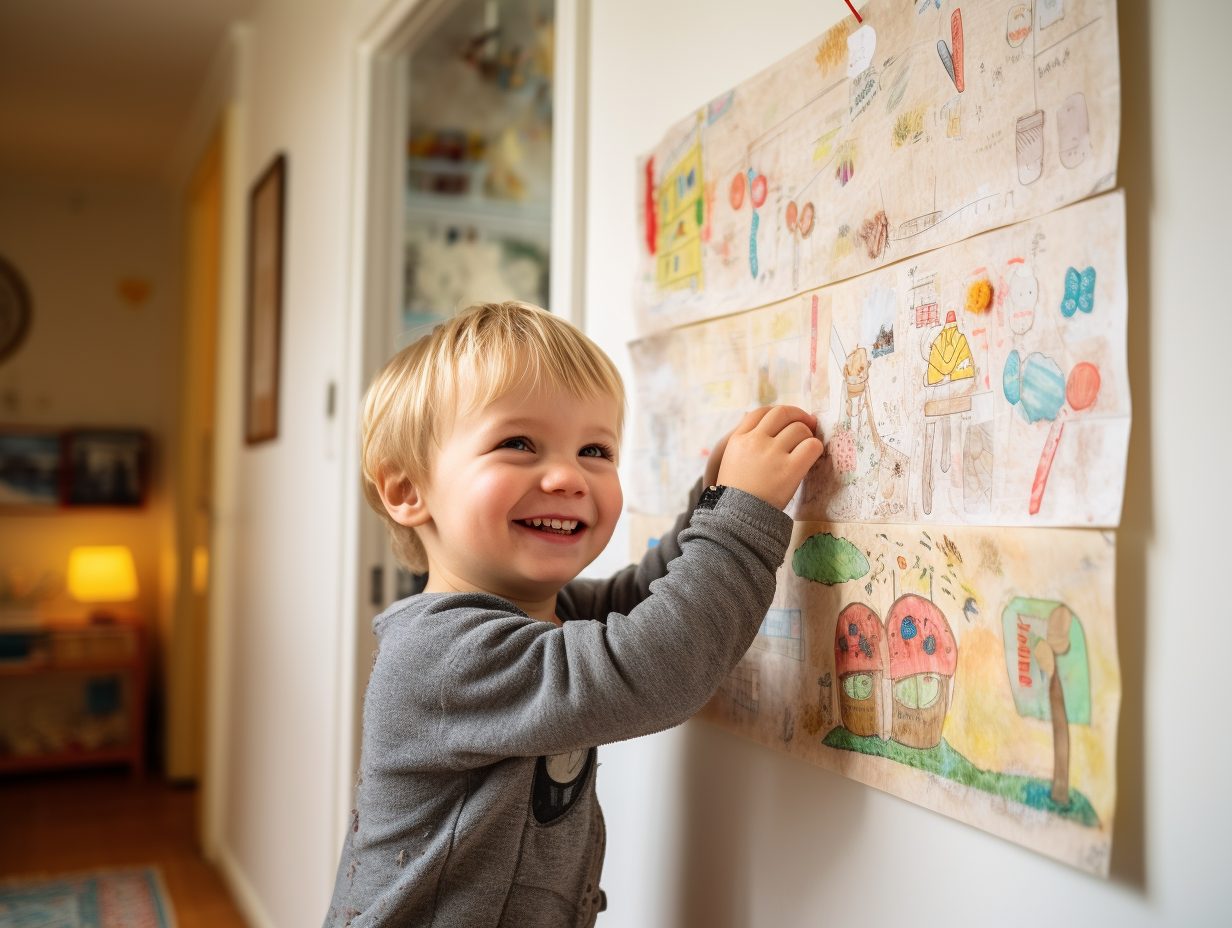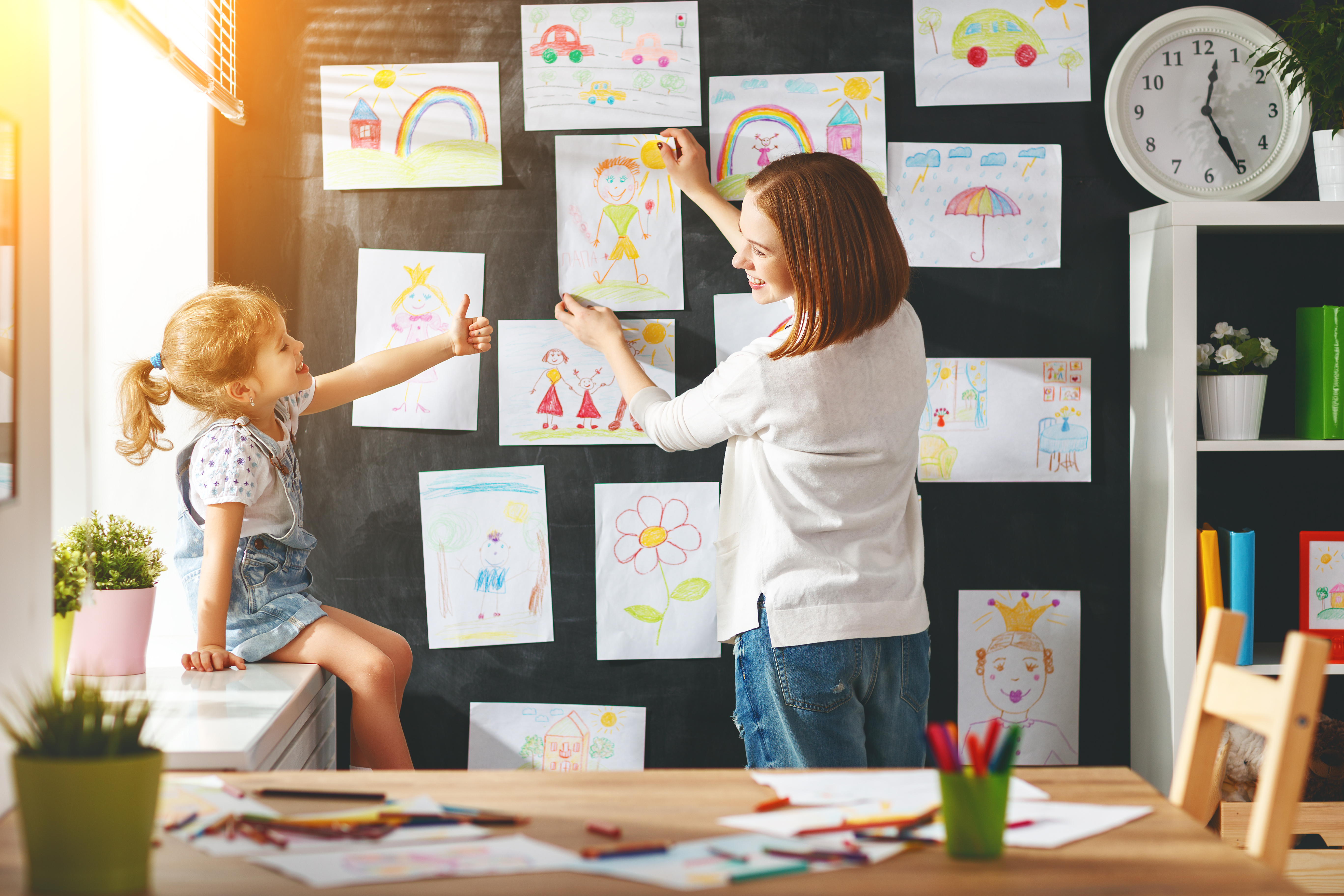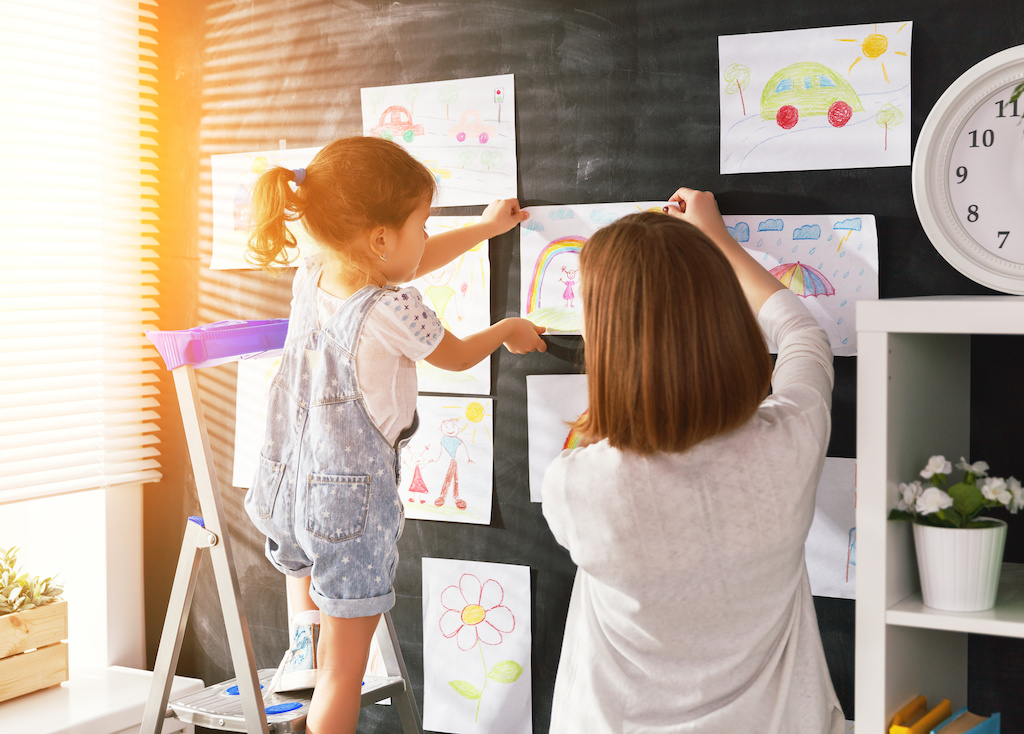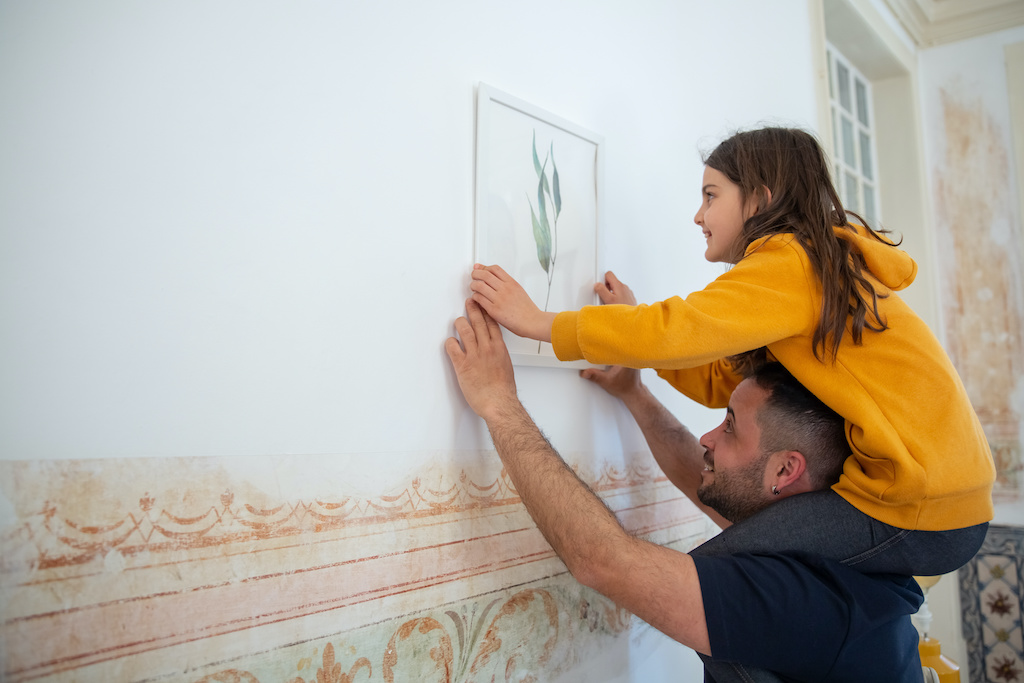
Setting the scene with your child's pictures: How to create an art exhibition at home
Do you find your fridge covered in a rainbow of drawings and finger paintings? Are your shelves overflowing with your child's masterpieces? It's time to take those treasured artworks to the next level and create an art exhibition right in your own home. Not only will this showcase their creativity, but it will also foster confidence, inspire imagination, and create a lasting memory for your little artist. So let's dive into the world of art exhibitions and discover how you can set the scene with your child's pictures.
Understanding the Importance of Displaying Your Child's Artwork
Art is more than just a pretty picture on a wall. It's a window into your child's world and a reflection of their unique perspective. By displaying their artwork, you're not only affirming their creative talents but also giving them a platform to express themselves. It boosts their self-esteem, fosters a sense of accomplishment, and encourages them to further explore their artistic abilities.
When you display your child's artwork, you create a gallery within your home. This gallery becomes a showcase of their growth and development as an artist. Each piece tells a story, capturing a moment in time or an emotion that your child experienced while creating it. By displaying their artwork, you provide them with a constant reminder of their artistic journey, encouraging them to continue exploring their creative potential.
Fostering Creativity and Confidence
Creating an art exhibition at home will encourage your child to think outside the box and experiment with different mediums and techniques. It's a celebration of their creativity and gives them the freedom to express themselves without limitations. When they see their artwork displayed, it instills a sense of pride and confidence in their abilities.
Imagine the joy and excitement your child feels when they see their artwork framed and hanging on the wall. It becomes a tangible representation of their artistic achievements, reminding them that their creativity is valued and appreciated. This display of their artwork also encourages them to take risks and explore new artistic endeavors, knowing that their efforts will be acknowledged and celebrated.

It motivates children to have their own drawings exhibited on the wall. Adobe Stock/JenkoAtaman
The Emotional Benefits of Art Display
Art has a powerful way of evoking emotions and expressing thoughts and feelings that words cannot capture. By displaying your child's art, you're providing them with a tangible reminder of their emotions and experiences. It allows them to revisit their memories, reflect on their growth, and embrace their emotions in a visible and meaningful way.
When your child sees their artwork displayed, they are reminded of the moments of joy, excitement, and even frustration that they experienced while creating it. This visual representation of their emotions helps them develop a deeper understanding of themselves and their artistic process. It also allows them to share their emotions with others, sparking meaningful conversations and connections.
Furthermore, displaying your child's artwork can also serve as a source of inspiration and motivation. When they see their past creations, they are reminded of their artistic potential and are encouraged to continue exploring their creativity. It becomes a visual reminder that they are capable of creating something beautiful and meaningful, fueling their passion for art.
Preparing for Your Home Art Exhibition
Selecting the perfect pieces for your exhibition is the first step in creating a captivating display.
But how do you go about gathering and organizing your child's artwork? And what factors should you consider when choosing the perfect location for your exhibition? Let's delve into these questions and explore the exciting process of preparing for a home art exhibition.
Gathering and Organizing Your Child's Artwork
Start by gathering all of your child's artwork from various nooks and crannies. Search under the bed, in the closet, and even in the attic. You never know where a hidden masterpiece might be waiting to be discovered. As you collect the artwork, take a moment to appreciate each piece, reminiscing about the moments and emotions your child experienced while creating them.
Once you have gathered all the artwork, it's time to sort them into different categories. Separate the paintings from the drawings, and the sculptures from the collages. This categorization will not only make the curating process easier but also allow you to see the progression of your child's artistic skills over time.
Now, you can take the organization a step further by arranging the artwork chronologically or by theme. By doing so, you create a coherent narrative throughout the exhibition, allowing viewers to witness the growth and development of your child's artistic journey. Imagine the joy on your child's face when they see their artwork displayed in such a thoughtful and meaningful way.

It's a good idea to let the children help choosing oder and location for their art. Adobe Stock/JenkoAtaman
Choosing the Perfect Location
Now that you have your child's artwork ready, it's time to select the ideal location for your exhibition. Consider a space that is easily accessible, such as a living room or a hallway with high foot traffic. This way, you can ensure that your child's artwork receives the attention it deserves from family, friends, and guests.
When choosing the location, lighting plays a crucial role in showcasing the art. Natural light can bring out the vibrant colors and intricate details of the artwork, while well-placed artificial lighting can create a dramatic effect. Experiment with different lighting options to find the perfect balance that highlights your child's creativity.
Another factor to consider is the available space. Make sure there is enough room for viewers to appreciate each piece without feeling cramped. Allow the artwork to breathe and give it the space it needs to make an impact. Consider the flow of the exhibition, guiding viewers through a visual journey that tells a story.
Remember, the location sets the mood for the exhibition. If you want to create an intimate and cozy atmosphere, choose a smaller room with warm lighting. If you prefer a more open and airy feel, opt for a larger space with natural light streaming in through large windows. The choice is yours, and it should reflect the essence of your child's artwork.
So, as you embark on this exciting journey of preparing for your home art exhibition, remember to cherish each artwork, organize them with care, and select a location that will bring out the best in your child's creativity. Let the exhibition be a celebration of your child's artistic journey and a testament to their talent and imagination.
Setting Up the Art Exhibition
The way you present your child's art can make all the difference in capturing visitors' attention and creating an immersive experience.
Framing and Mounting Techniques
Give each artwork the attention it deserves by framing it. This not only enhances its appearance but also protects it for years to come. Choose frames that complement the style of the piece and coordinate with the overall theme of your exhibition. Experiment with different mounting techniques, such as floating or matting, to add depth and dimension to the display.

By framing your child's work you underscore its importance. Adobe Stock/Mangostar
Arranging Artwork for Maximum Impact
The arrangement of your child's art should flow naturally throughout the exhibition. Consider creating a visual journey by arranging the pieces in a way that tells a story or evokes certain emotions. Group similar pieces together or create contrasts between different styles and sizes. Play with spacing and add small elements, such as plants or props, to enhance the overall aesthetic.
Making the Exhibition Interactive
An interactive art exhibition invites viewers to actively engage with the artwork, making it a memorable and immersive experience.
Creating Art Descriptions and Titles
Help your child communicate their artistic intentions by creating descriptions or titles for each piece. Encourage them to think deeply about their artwork, and together, write engaging descriptions that give viewers a glimpse into the artist's inspiration and thought process. These descriptions can be displayed next to the artwork, adding another layer of interpretation to the exhibition.
Incorporating an Art Walk
Take the exhibition a step further by incorporating an interactive art walk. Create activity stations where viewers can engage with the art through drawing, painting, or sculpting. Provide art supplies and encourage visitors to create their own masterpiece inspired by your child's artwork. This not only enhances the interactive nature of the exhibition but also fosters a sense of community and connection among viewers.
Keeping the Exhibition Fresh and Exciting
A successful art exhibition is always evolving and keeping viewers interested. Here's how you can maintain the excitement around your child's artwork.
Rotating Artwork Regularly
Change up the display by rotating artwork every few weeks or months. This keeps the exhibition fresh for visitors and allows your child to showcase new pieces or different styles. Involve them in the selection process and encourage them to curate their own mini-exhibitions within the larger display.
Inviting Friends and Family to View
Share the magic of your child's art by hosting private viewings for friends and family. This creates a special experience for your child as they see their loved ones marvel at their talent and creativity. Encourage guests to leave comments or write messages of encouragement for your little artist, further boosting their self-confidence.
Creating an art exhibition at home is a wonderful way to celebrate your child's creativity and provide them with a platform to shine. By understanding the importance of displaying their artwork, preparing meticulously for the exhibition, and making it interactive and exciting, you will create an experience that will ignite their imagination and leave a lasting impression. So set the scene with your child's pictures and showcase their artistic journey for all to admire!
